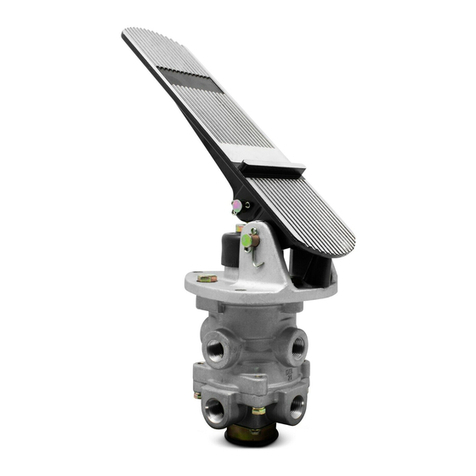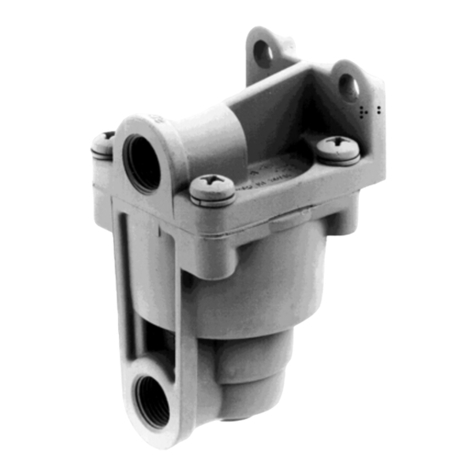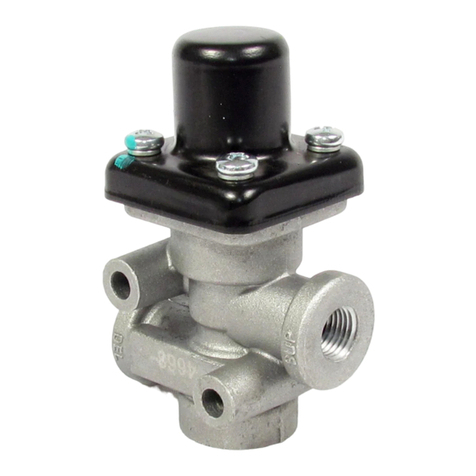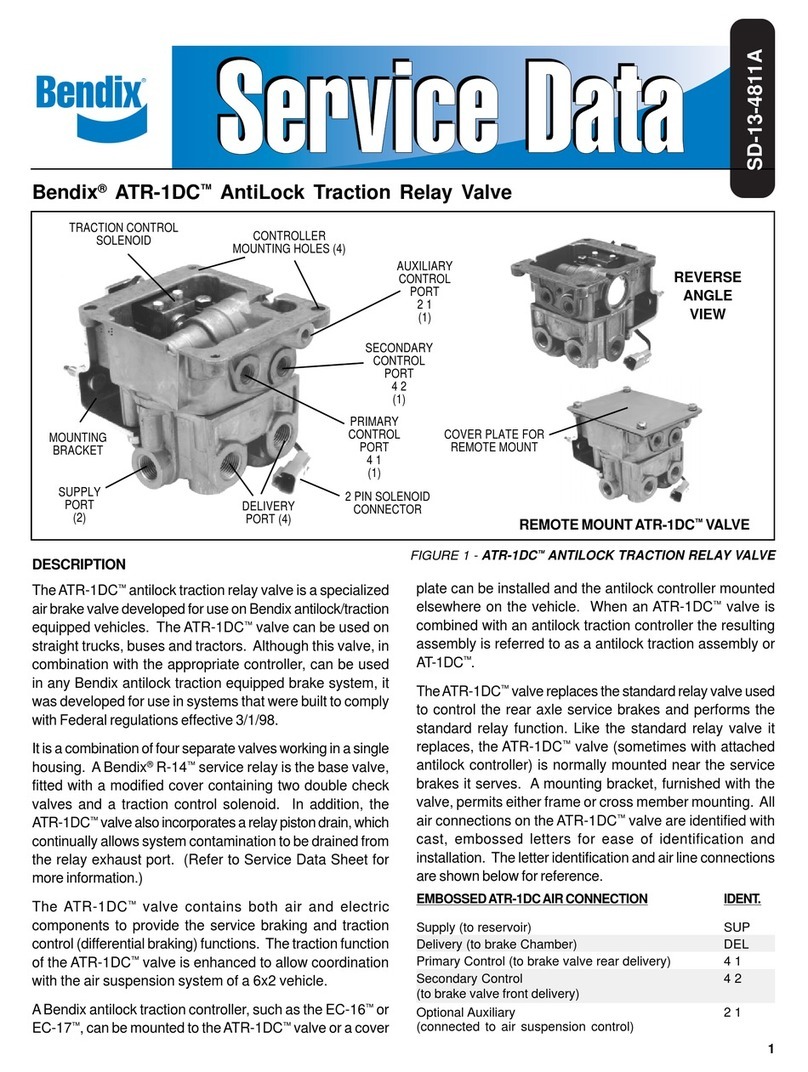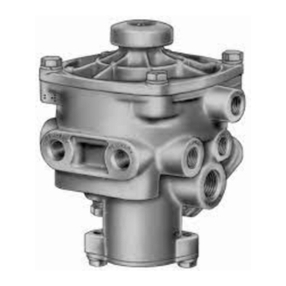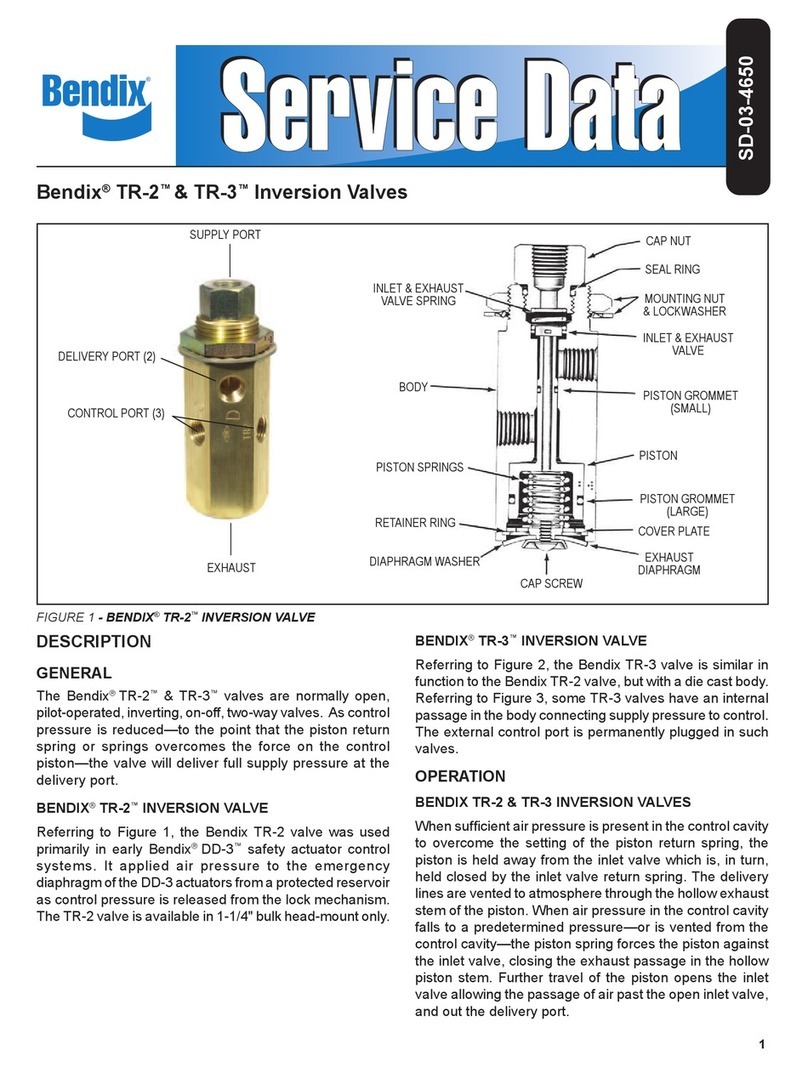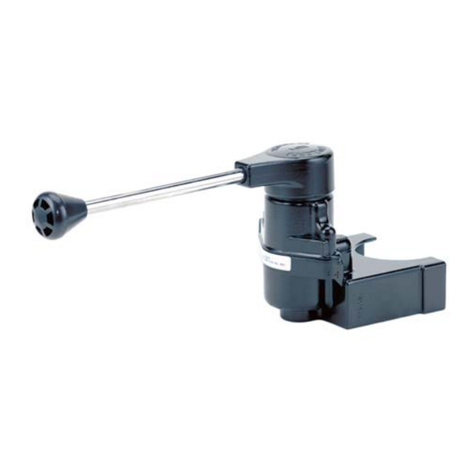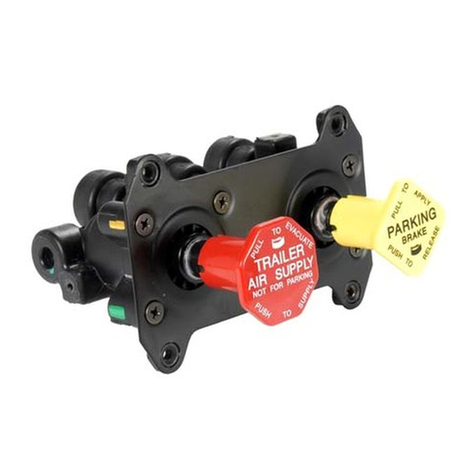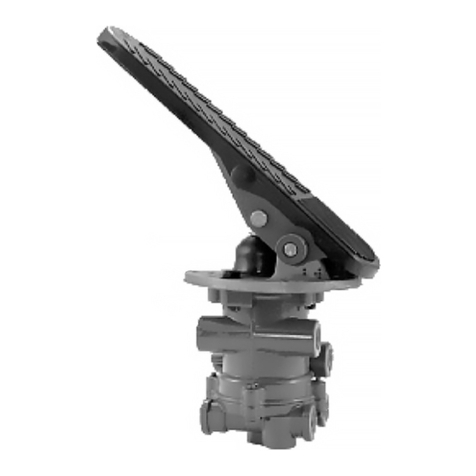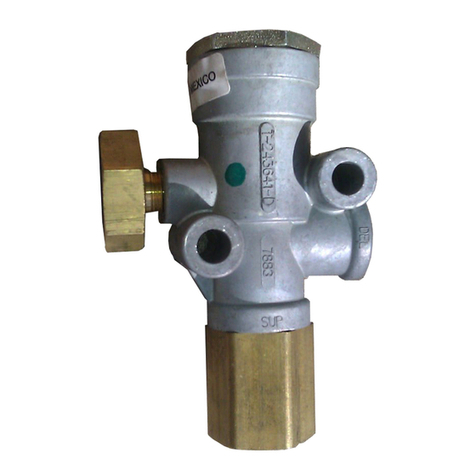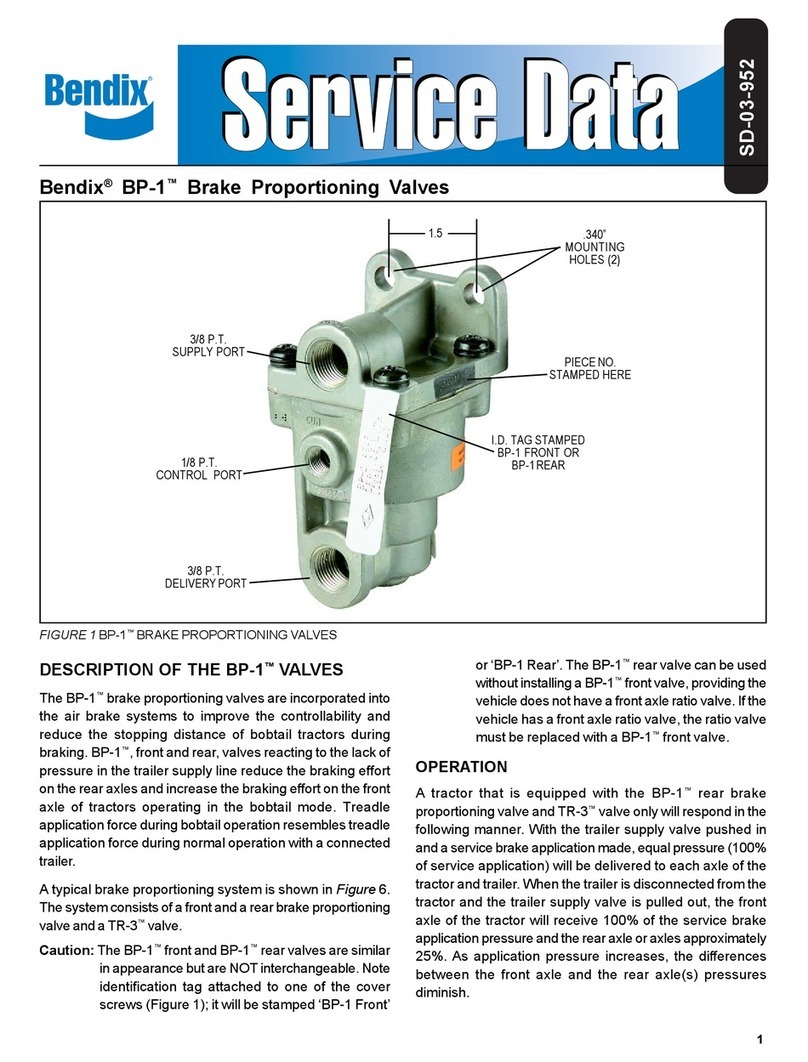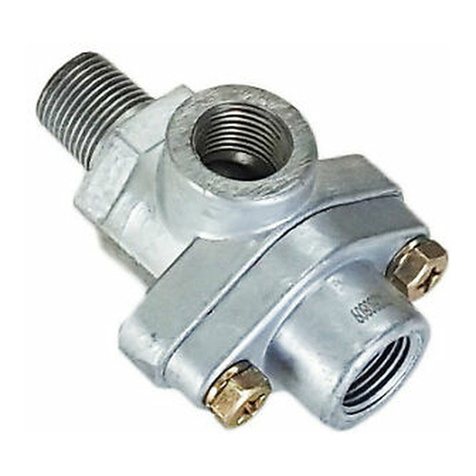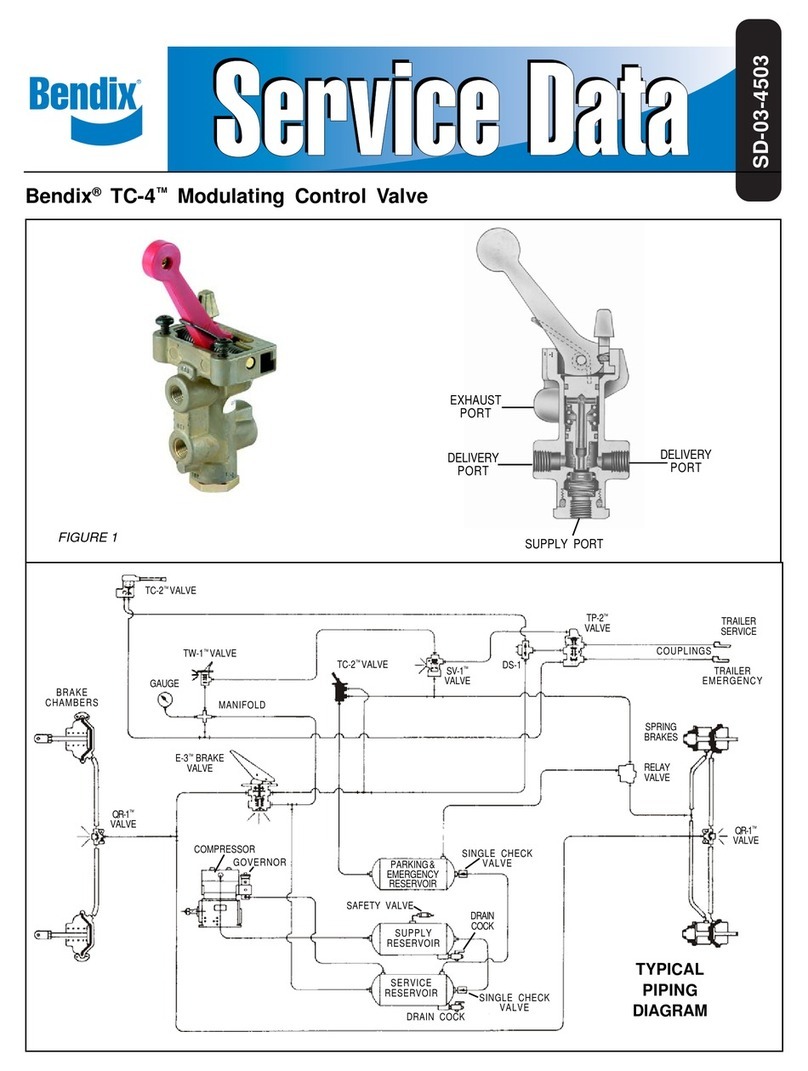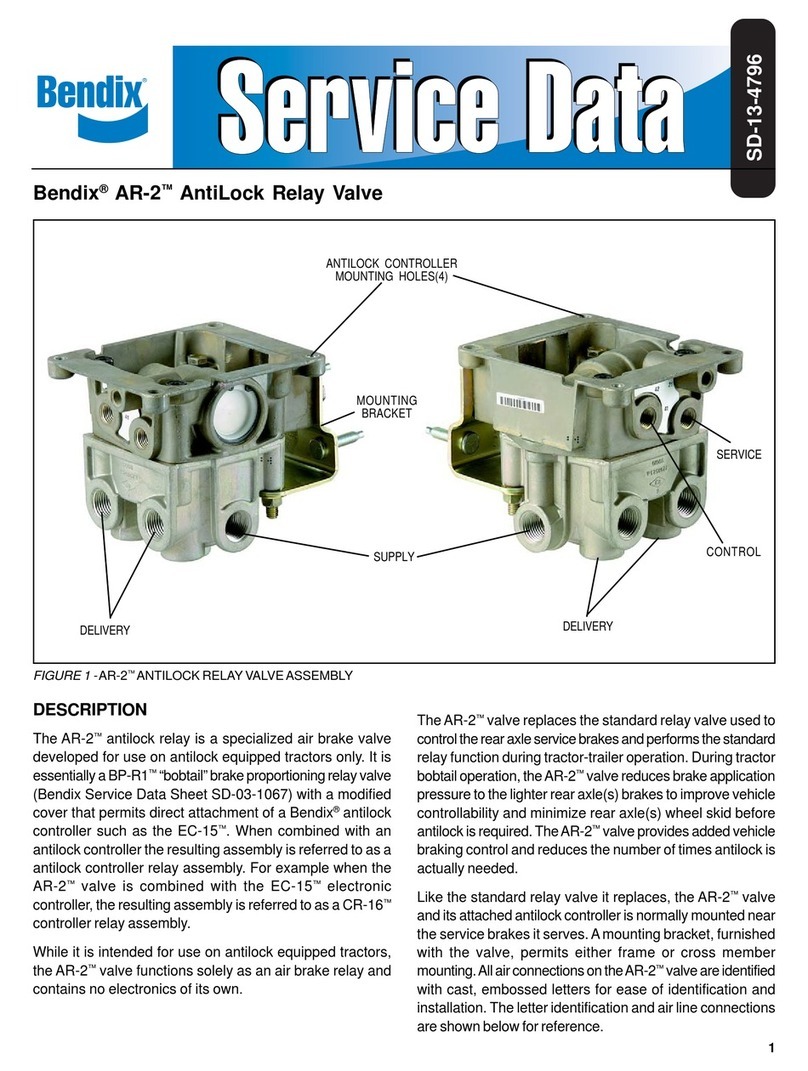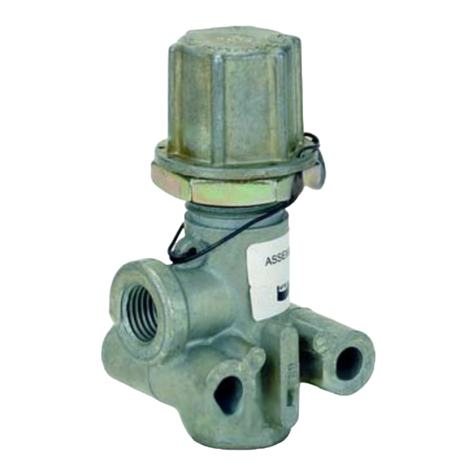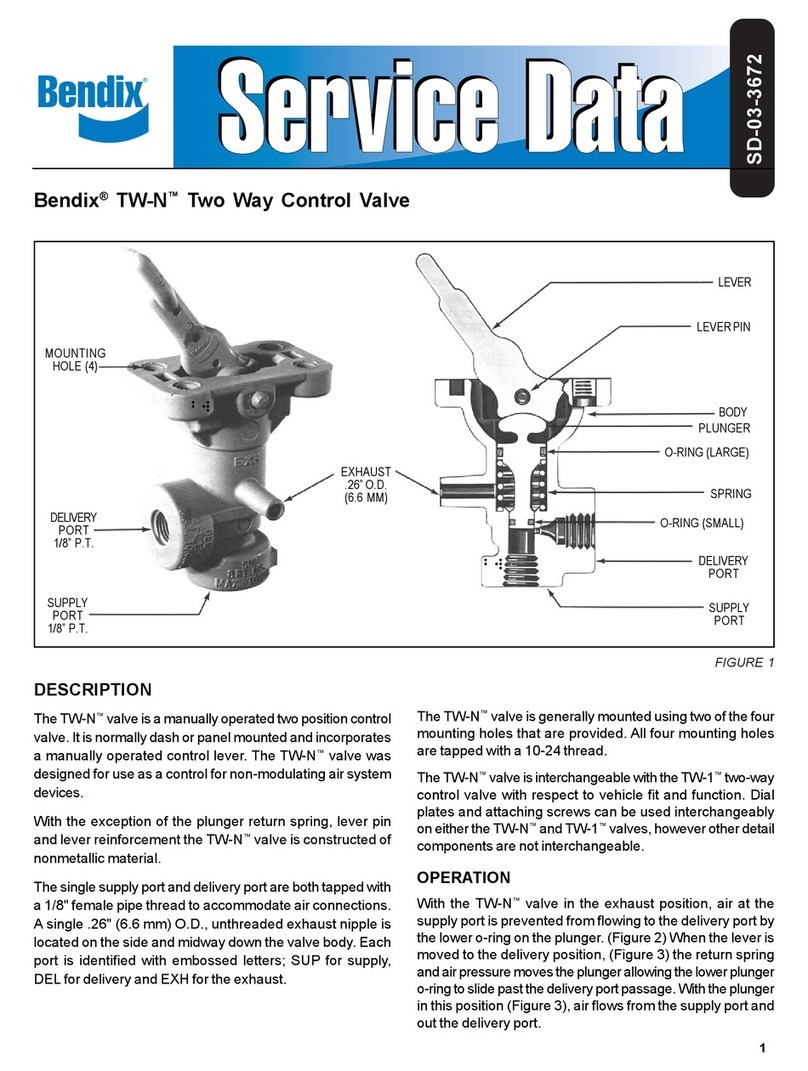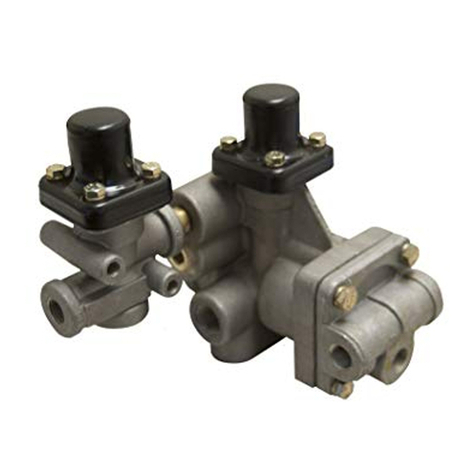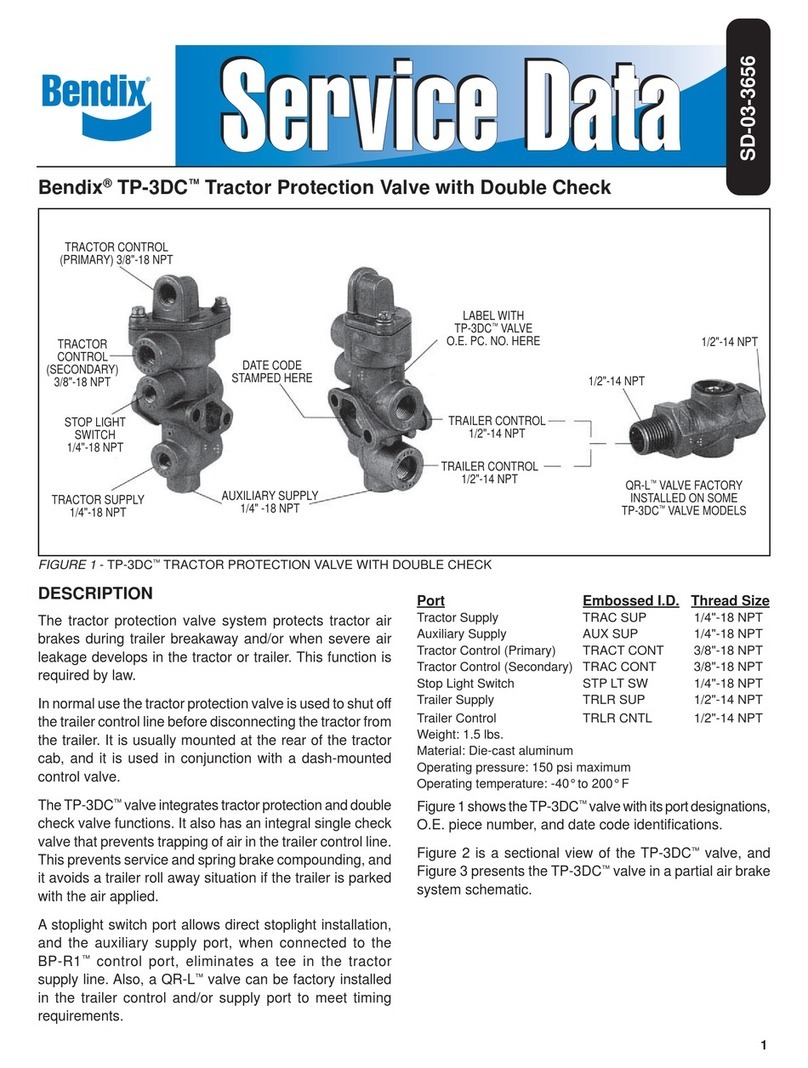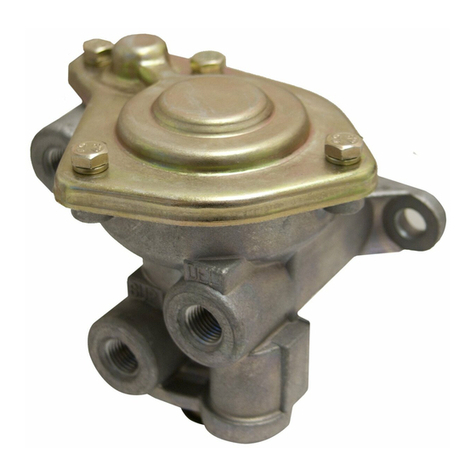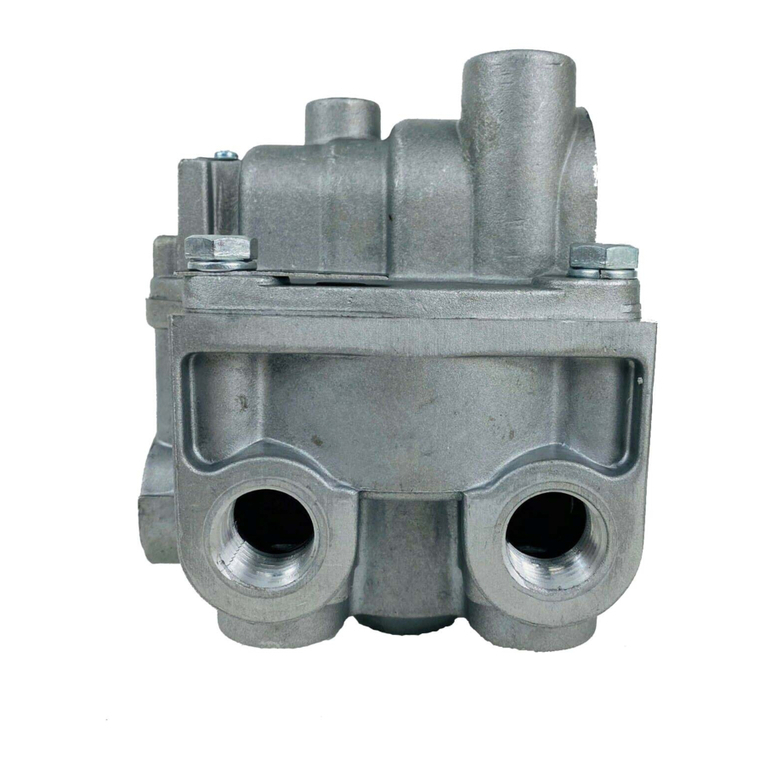
3
2. Inspect all air lines connected to the Dual Relay Valve
for signs of wear or physical damage. Replace as
necessary.
3. Test air line fittings for excessive leakage and tighten
or replace as necessary.
4. Perform the Leakage Test described in this manual.
Every year, 100,000 miles, or 3,600 operating hours:
1. Perform the Operation and Leakage Tests described
in this manual.
GENERAL SAFETY GUIDELINES
WARNING! PLEASE READ AND FOLLOW
THESEINSTRUCTIONSTOAVOIDPERSONAL
INJURY OR DEATH:
When working on or around a vehicle, the
following generalprecautions should be observed
at all times.
1. Park the vehicle on a level surface, apply the parking
brakes, and always block the wheels. Always wear
safety glasses.
2. Stoptheengineand remove ignition key when working
underoraroundthevehicle. Whenworkingintheengine
compartment, the engine should be shut off and the
ignition key should be removed. Where circumstances
require that the engine be in operation, EXTREME
CAUTION should be used to prevent personal injury
resulting from contact with moving, rotating, leaking,
heated or electrically charged components.
3. Do not attempt to install, remove, disassemble or
assemble a component until you have read and
thoroughly understand the recommended procedures.
Use only the proper tools and observe all precautions
pertaining to use of those tools.
4. Iftheworkisbeingperformedonthevehicle’sair brake
system,oranyauxiliarypressurizedair systems, make
certain to drain the air pressure from all reservoirs
before beginning ANY work on the vehicle. If the
vehicle is equipped with anAD-IS®air dryer system or
a dryer reservoir module, be sure to drain the purge
reservoir.
5. Following the vehicle manufacturer’s recommended
procedures, deactivate the electrical system in a
manner that safely removes all electrical power from
the vehicle.
6. Never exceed manufacturer’s recommended
pressures.
7. Never connect or disconnect a hose or line containing
pressure; it may whip. Never remove a component or
plug unless you are certain all system pressure has
been depleted.
8. Use only genuine Bendix®replacement parts,
components and kits. Replacement hardware, tubing,
hose, fittings, etc. must be of equivalent size, type
and strength as original equipment and be designed
specifically for such applications and systems.
9. Components with stripped threads or damaged parts
should be replaced rather than repaired. Do not
attempt repairs requiring machining or welding unless
specifically stated and approved by the vehicle and
component manufacturer.
10.Priortoreturningthe vehicle to service, make certainall
components and systems are restored to their proper
operating condition.
11. For vehicles with Antilock Traction Control (ATC),
the ATC function must be disabled (ATC indicator
lamp should be ON) prior to performing any vehicle
maintenance where one or more wheels on a drive
axle are lifted off the ground and moving.
OPERATION & LEAKAGE TESTS
LEAKAGE TESTS
1. Fullychargetheairsystemmaking certain that the rear
service reservoir is fully charged.
2. Withthe system fully charged, check for leakage at the
rubber exhaust flap of the valve. Coat the exhaust flap
with a soap solution.A1 inch bubble in not less then 3
seconds is permitted (175 sccm max.).
3. Makeafullbrake application and hold it while checking
for leakage at the rubber exhaust port check of the
valve. Coat the exhaust port with soap solution. A 1
inch bubble in not less then 3 seconds is permitted
(175 sccm max.).
OPERATION TESTS
General
To complete the operational tests two accurate testgauges
and the appropriate fittings to “tee” the gauges into the
variouslines are required.Testingrequires that one gauge
beinstalled and remain in the line connectedtothedelivery
port 22 throughout the operational testing. The second
gaugewillbe alternately installed in the primary control line
leading to port 41 and the secondary control line leading
to port 42.
1. Install the gauge in the delivery line leading to port
22.
2. Install the gauge in the primary control line leading to
port 41.
3. Remove and PLUG the line leading to the secondary
control port 42.
